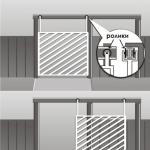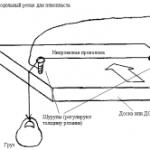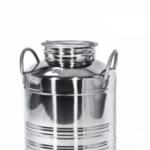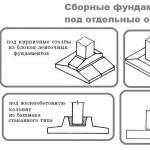You can find dozens on the market. But by purchasing a ready-made solution, you not only overpay the manufacturer a round sum for beautiful elements that are completely unnecessary in moonshine brewing, but you also cannot be sure of the quality of the manufacturing materials.
How are the tubes made and how long will they last, what is the cube made of, how durable are the sealed connections?
This is why experienced moonshine brewers prefer making a moonshine still to purchasing a ready-made one. In one of the articles we talked about this device, it’s time to tell you how to assemble a moonshine still from scratch for home use.
From this article you will learn how to make a moonshine still with your own hands, what materials to use so that a moonshine still for your home will last for several years, how to clean a moonshine still, whether it is worth spending time assembling a still with a steamer and a bubbler (and what it is). Let's go, forward to the perfect alcohol!
First, we will briefly describe the main elements that any circuit of a moonshine still equipped with a refrigerator contains (the presence of this element significantly speeds up the process, so we recommend not even considering the drawings of devices without forced cooling), after which we will tell you how you can make them yourself, and how to achieve maximum efficiency and durability.
So, the main design elements are as follows:
- Connecting elements.
Alembic
This is where it will happen heating the mash. Due to thermal and chemical effects, this element is at risk of destruction, which dictates special requirements for materials.
For example, distillation aluminum cube cannot be used - this design will be extremely short-lived(in our time, aluminum is not recommended for use even as a material for pans due to the oxide film that can enter the body).
An excellent option is to use copper cubes, but the cost of copper is high, so its use is only advisable if the container is already available. If not, look towards enamel cookware, which does not react with acids and alcohols. Good enamel will withstand about four years of quiet work, and about 2 years of “wear and tear” work.
A good option might be stainless steel cube, but ask the seller for documents, since scammers often sell galvanized steel under the guise of stainless steel, which is not as resistant to chemical attack.
Distillation cubes also differ in size. The dimensions of the container can be selected by approximately estimating the volume of the product required.
As a rule, to make a homemade home moonshine still, choose a container with a volume of 25 to 35 liters.
For a rough estimate, a 30 liter container allows you to get about 2.5 liters of pure alcohol in one distillation.
Connecting elements
Absolutely any scheme for a moonshine still contains tubes- those elements through which gas and liquid will flow. Not only the convenience of alcohol production, but also safety of consumption of the finished product.
Here are a few simple rules that will allow you to produce a chemically pure product that is safe for consumption.
Main Question– what can you make your own compounds from so that the finished alcoholic product does not contain impurities harmful to human health?
The best option would be to use tubes made of stainless steel– this material will ensure the complete absence of harmful impurities, in addition, it is stainless steel that will provide the necessary durability.
When purchasing materials for the production of a home brewing apparatus, we recommend that you take care of purchasing fittings, which will allow the use of tubes of different cross-sectional diameters. And for sealing these structural elements, the most common dough is best suited, which is guaranteed not to affect the quality of the resulting distillate.
What is a steamer?
A moonshine still with a steamer requires a slightly higher amount of labor for production, but at the same time will provide a significantly higher quality of the product.
The steam trap is exactly the element that will ensure the retention of the elements. Strictly speaking, its use is not mandatory, and many are frightened by the very fact of the presence of an extra element in the circuit diagram of the device.
There is no need to be afraid - to implement it into the design you will only need to find a container, the volume of which is 10 times less than the volume of the distillation cube and a lid for this container.
Next in the lid you need to do two holes, into which to insert hoses through the fittings. And these few simple steps will allow you to get a much cleaner product. Agree, the game is worth the candle!
Rectification of moonshine at home
A rectifier (also often called a rectification column) is an element of a moonshine still that allows divide the liquid into fractions and give a pure product, completely devoid of impurities of fusel alcohols, methanol and acetone.
A moonshine still with a distillation column will allow you to obtain absolutely pure and safe tinctures and other drinks.
But it is worth considering that the distillation column will allow you to obtain separated ethyl alcohol, so the use of this element is advisable not in production, for example, but specifically in the task of obtaining pure alcohol.
Double distillation
Obtaining the highest quality product is exactly the task that any person who assembles a moonshine still at home sets for himself. In order for your device to produce the purest product, you should consider the following stages of alcohol production:
- . Too much alcohol in the liquid can cause a fire, so before re-distilling, you should reduce the strength of the mash. That is, if you have raw materials with a strength of 40 degrees, you should dilute it twice to get raw materials with an alcohol content of 20%.
- . After diluting the raw material, it should be thoroughly cleaned. For cleaning, you can use, for example, (quite a classic technique that our grandfathers used). If you decide to purify raw materials using this method - dilute 3 grams of potassium permanganate in 300 ml of hot water. The resulting solution should be poured into the moonshine, stirred and let sit for 20-25 minutes. Then add a tablespoon of salt and soda, which every housewife already has. After a couple of hours, thoroughly strain the mixture through a filter made of cotton wool and gauze.
- Actually, . The first distillation has virtually no differences from re-distillation. Experienced brewers will tell you exactly about the three stages of obtaining finished alcohol; they usually call them "head", "body" and "tail". In short, the first fraction, about 10% of alcohol, is not recommended for use as “drink” under any circumstances. The second fraction - about 80% - is double moonshine, for which everything was started. The third fraction - “tails” - is what we can use to increase the strength of the subsequent mash.

Repeated distillation of the mash allows you to significantly increase the strength of the product (up to 70 revolutions!) and avoid the need for further purification of the resulting drink. Homemade ones are quite specific, but at the same time they allow you to achieve a much stronger drink, which is the goal of many of our fellow citizens.
In this article, we learned what it takes to make a moonshine still with your own hands, and looked at how to make all the design elements of a moonshine still at home. And - most importantly - now we know what double distillation is, and how to assemble a double distillation moonshine with your own hands.
And the choice, as always, is yours - whether to produce homemade wine, or, armed with fresh knowledge, prepare to produce the strongest drinks. But, whatever you choose, know that the process of making alcoholic drinks with your own hands will certainly captivate you, perhaps even will become the main hobby of your life. We wish you success in production!
Although there are many home distillers of different price categories on the market, experienced moonshiners prefer to make the equipment themselves or order it from trusted craftsmen using their own drawings and diagrams.
The advantage of this approach is not only cost savings. Often, a home-made moonshine still is more reliable and practical than most store-bought models with incomprehensible elements that contradict the laws of physics, installed only to attract buyers and raise the price. Next we will look at the classic design of a moonshine still (distiller), which has no equal in simplicity and efficiency.

 Scheme of operation of a moonshine still with a steamer
Scheme of operation of a moonshine still with a steamer Connecting elements
Intermediates play an important role. If you choose the wrong pipes or sealant, the moonshine turns out to be cloudy, with a nasty aftertaste, foul-smelling and even hazardous to health. Therefore, we will begin our consideration of the design with the connecting elements.
You should not “tightly” weld all the tubes together; this simplifies the assembly and disassembly of the device, but during cleaning it causes a lot of problems.
Metal tubes made of stainless steel, aluminum or copper, as well as alcohol-inert food or medical silicone hoses are most often used as a transport system. In terms of economy, safety, ease of maintenance and operation, the best option is food grade stainless steel tubes.
It is important to be able to distinguish silicone hoses from those made of PVC (polyvinyl chloride, when in contact with hot steam, saturates alcohol with toxic substances). PVC burns with a lot of smoke and an unpleasant odor. Silicone does not smoke when burned and leaves a subtle odor and light ash. Silicone tubes feel much softer to the touch than PVC tubes, and their price is about twice as high.

 Left - silicone, right - PVC
Left - silicone, right - PVC To branch turns, change from one diameter to another and connect different parts in metal pipelines, fittings and unions are used, which can be found in plumbing stores or at construction markets. Fittings made of brass, bronze and stainless steel (the best option) for heating systems that can withstand high temperatures and pressure are suitable for the manufacture of a moonshine still. For sealing purposes, the use of heat-resistant glue and cold welding is allowed, the main thing is to avoid rubber gaskets.
You can also use an organic substance to seal the tubes - ordinary dough, which does not affect the distillate. There are two disadvantages: it takes a lot of time to knead and seal joints, and after distillation, the dried dough has to be scraped off.

 Sealing with dough is a touch of ancient traditions followed by scraping :)
Sealing with dough is a touch of ancient traditions followed by scraping :) The assembled moonshine still must be sealed. If steam leaks through the tubes, it is better to stop distillation, allow the equipment to cool, repair the breakdown, and only then continue distillation. Depressurization is not only dangerous due to fire, but also leads to significant losses of moonshine (10-70%).
Alembic
It is a container in which the mash boils during the heating process. Options:
1. Material. Aluminum - most often found in “Soviet” moonshine stills due to the widespread use of aluminum milk cans. Aluminum partially reacts with acids and alcohol in the mash, so with frequent use, aluminum stills (especially old ones) become unusable after six months - a leak appears.
Enameled cookware is neutral to acids and alcohols. When used correctly (without bumps or scratches to the enamel) it can last 3-5 years even with regular use.
Food-grade stainless steel is the best and most reliable option, but stainless steel cubes are expensive; they often sell ordinary galvanized or nickel-plated steel under their guise, which is not so durable.
Copper cubes are also suitable, however, in most cases this is an unreasonably expensive solution, especially for novice moonshiners.
2. Volume and dimensions. The volume of the still depends on the needs of the moonshiner; the best option for home use is 25-35 liters.
Attention! For safety reasons, the distillation cube can be filled with mash to a maximum of 80% of the volume; take this into account when choosing a container. It is also very important that the lid is removable and the neck width is large enough for comfortable cleaning of the container after distillation.
The volume of the cube is calculated based on the needs for the finished product. For example, in a 30-liter container, in one distillation you can get up to 2.88 liters of pure alcohol (or 7.2 liters of moonshine with a strength of 40%). The maximum mash load is 24 liters (30 * 0.8 = 24). The average strength of properly made mash is 12%. The amount of distillate at the output is 24 * 0.12 = 2.88 (in terms of absolute alcohol with a strength of 100%). In practice, there will always be losses of moonshine of 8-15%.
We should not forget about the dimensions. At a minimum, the distillation cube must be placed on a stove or other heating element, be stable and not block the access to the entire apparatus. This is the basis of safety precautions.
3. Selecting a suitable container. Often, home moonshine stills use containers that were originally intended for other needs: milk cans, pressure cookers, or large enamel pans.
The cube must be reliable - it will expand when heated, and withstand high temperatures and pressure (180-220 Pa). Homemade welded containers are very dangerous, as there is a risk that the welding seam will burst at the most inopportune moment.
A significant drawback of pressure cooker cubes is their small volume, but these containers are initially airtight. The only modification required is to drill a hole in the lid for the steam outlet tube. described in a separate article.

 You can’t distill a lot of mash in a pressure cooker at one time - the volume of the cube is too small
You can’t distill a lot of mash in a pressure cooker at one time - the volume of the cube is too small Enameled pans are convenient because the spent mash can not be poured, but can be immediately put into distillation as is (this is wrong, since the heated sediment increases the amount of harmful impurities in the moonshine and worsens the aroma and taste). The disadvantage of the pan is that it is difficult to seal the lid.
A milk can made of aluminum or stainless steel is the most practical solution. The only drawback of cans that requires mandatory elimination is the rubber gasket on the lid. The fact is that alcohol vapor absorbs substances from rubber, this negatively affects the quality, taste and smell of moonshine. Rubber gaskets must be replaced with silicone ones (made from aquarium silicone).

 A can with built-in heating elements is cheap and practical. There are two holes on the top for steam and a thermometer.
A can with built-in heating elements is cheap and practical. There are two holes on the top for steam and a thermometer. How to make a distillation cube for a moonshine still from a can
It is not enough to correctly determine the volume of the container; you also need to prepare the cube for use - drill a hole for steam, seal the lid and connections. Next we will look at modifying the container using an old milk can as an example, but this method of sealing the lid is also suitable in other cases.
Can refinement technology:
1. Remove the rubber gasket from the cover.
2. Apply aquarium silicone sealant to the metal edges of the lid and leave until completely dry. Repeat the procedure 2-3 more times.
3. Place cellophane on the neck of the can and close the lid. Leave for a couple of hours until completely dry. You will get a silicone seal that replaces the rubber gasket.

 Result
Result An alternative, simpler method of sealing is to overlap the rubber with several layers of fum tape and boil for 60 minutes in boiling water.
4. Make a hole in the can lid to connect to a coil or steamer. If the internal diameter of the coil is 12 mm, the suitable hole for the pipe in the can is 22 mm and the thread is 0.5 inches. Adapters are sold at plumbing supply stores.
To extend its service life, wash the can after each distillation with soap and plenty of running water. The use of soda and other cleaning products is strictly prohibited.
Moonshine still refrigerator
It consists of two parts - a coil (twisted tube) and a reservoir for cooling this tube. The cooling compartment is the most important element of the entire structure, the functioning of which determines the quantity and quality of moonshine.
Coil parameters
1. Material. It must not react with alcohol (or have minimal contact), be safe and non-toxic, withstand high temperatures (up to 100°C), and have high thermal conductivity. Based on the requirements, four options are possible: copper, aluminum, stainless steel (food grade) and glass.
Copper has the highest thermal conductivity; another advantage is its relative ease of processing (soldering is possible). But this material has one feature - the copper coil requires periodic cleaning with vinegar or citric acid with boiling water (preferably after each distillation), otherwise the plaque accumulated after oxidation with alcohol will negatively affect the quality of the moonshine.
All moonshiners complaining about copper do not clean their devices well. In world distilling practice, copper is considered the best or even the only permitted material (France, Scotland) for the manufacture of distillers (alambics). Light oxidation of copper with alcohol helps improve the taste, since it reduces the amount of impurities with a bad odor, and increases the concentration of substances that make moonshine soft.
The second most thermally conductive material for a coil is aluminum (1.6 times worse than copper). The advantages of aluminum are availability, low cost and ease of processing. But there is also a drawback - minimal oxidation, which, unlike copper, does not release useful substances into moonshine, so aluminum coils are not very common.
In terms of thermal conductivity, food grade stainless steel is 3-4 times inferior to copper. But this material does not react with alcohol and does not oxidize. Another disadvantage, along with low thermal conductivity, is the relative complexity of processing.
It is not possible to make a glass coil at home; without special equipment it is easier to buy a ready-made laboratory device. Glass is inert towards alcohol, but is very fragile and has low thermal conductivity.

 Copper coil is the best, but requires regular cleaning
Copper coil is the best, but requires regular cleaning 2. Dimensions and thickness of the tube. The longer the tube, the larger the contact area of the steam with the cooling element. But there is also a side effect of a long length - hydraulic resistance increases (condensed vapors move through the tube already in a liquid state), which reduces the distillation speed.
The optimal length of the coil tube (before the bend) is 1.5-2 meters.
The larger the internal diameter of the coil (section), the lower the hydraulic resistance and the more efficient the cooling (due to an increase in the area of contact of the steam with the walls). But very large diameter tubes are bulky, require a lot of water for cooling and are difficult to process, so you have to look for a “golden mean”.
The minimum wall thickness increases thermal conductivity, which improves the condensation of alcohol vapors. But tubes that are too thin are very fragile and, with intensive use of the moonshine still, quickly break.
Suitable coil thickness is 0.9-1.1 mm.
3. Orientation in space. There are three connection options: horizontal, vertical and inclined.
All other things being equal, the vertical arrangement of the coil is the most correct, since the condensed moonshine flows into the receiving container by gravity, without creating obstacles to the movement of alcohol vapor. Steam can be supplied to a vertical coil from above or below. To minimize resistance, it is correct to direct the steam to the top.
Refrigerator tank parameters
1. Substance. At home, the coil is cooled with air, water or ice. The vast majority of designs use water cooling as the simplest and most effective.

 Air Cooling - Beautiful Looks, But Low Efficiency
Air Cooling - Beautiful Looks, But Low Efficiency 2. Heat removal diagram. Systems can be open (work on running water) or closed (water remains in the tank without circulating, for example, a coil is lowered into a bucket). In terms of implementation and savings, closed systems are simpler and more profitable, but they cool the coil worse, which increases the loss of moonshine and has a bad effect on quality.

 The bucket is a classic example of a closed water cooling circuit
The bucket is a classic example of a closed water cooling circuit Flow circuits are more difficult to manufacture, use more water or energy for pumping (circulating a stable volume of water in order to save money), but they require a smaller reservoir and, all other things being equal, produce a high-quality distillate.
From a properly made refrigerator (coil plus water circulation system), moonshine comes out cold or at room temperature, but not warm or hot. In this case, it is important to select the optimal heating intensity (not to exceed the maximum permissible heat supply power) so that the entire system effectively copes with steam condensation.
3. Direction of water supply. It is correct to supply water to the refrigerator from below, and remove it from above, so that the water moves towards the steam, creating a countercurrent, otherwise the lower part of the coil will not cool well.
Making a refrigerator (cooler)
You will need a copper, aluminum or stainless steel tube 1.5-2 meters long, 8-12 mm in diameter and 0.9-1.1 mm in wall thickness. A plastic or metal pipe with a diameter of 75-80 mm is suitable as a reservoir for installing the coil. A drawing of the moonshine still refrigerator is shown in the photo.


Sequencing:
1. Fill the coil tube with sand, soda or other dry, bulk material so that the metal does not flatten when curling. If you don’t have bulk materials on hand, you can simply fill the tube with water and freeze it.
2. Hammer the ends with wooden pegs (chops) so that the sand does not spill out. Can be tightly clamped or soldered. It is advisable to weld a nut on one end.


3. Wind the tube onto any smooth, cylindrical object with an even cross-section of suitable diameter (according to the drawing - 35 mm). The pitch between turns is 12 mm.
The number of turns in the coil is not of fundamental importance; with the values of length, diameter and thickness indicated in the article, it is correct to make a step between turns of 12 mm.
4. Release the ends of the finished coil. Pour out the sand and rinse with water under pressure.
5. Install pipes for water supply and drainage on the cooler body.
6. Place the coil inside the housing. Install plugs at the top and bottom. Seal all connections.

 Ready assembled cooler
Ready assembled cooler The operating speed of the cooler of this design is up to 3 liters of moonshine per hour.
Steamer and bubbler
Optional, but desirable (especially for beginners) moonshine still modules.
A steam boiler is a sealed glass or metal container between the distillation cube and the refrigerator, into which the vapors are first cooled, and then some of the substances boil again and move into the coil.
The working principle of a steam steamer. Due to a sharp decrease in pressure (the volumes of the supply tube and the jar differ hundreds of times), the temperature drops, as a result the steam passes into the liquid phase (condenses), but is immediately heated by a new portion of hot steam from the cube, again turning into a gaseous state. But some of the water and fusel oils with a high boiling point do not have time to boil during this short moment of change in state of aggregation and remain at the bottom of the container.


Bubbler in a moonshine still– a device designed to pass alcohol vapor through a layer of liquid (water). Structurally, it differs from a steam steamer only in the presence of water in the container before distillation begins (not always), and in the fact that the steam supply tube is lowered into the can almost to the bottom. The purpose and principle of operation of the bubbler are the same as that of the steam steamer.

 Connected steam tank
Connected steam tank 
 Bubbler - the steam supply tube is lowered closer to the bottom, the distillate is flavored with lemon zest
Bubbler - the steam supply tube is lowered closer to the bottom, the distillate is flavored with lemon zest Advantages of a steamer (bubbler):
- is protection against splashing - the ingress of mash into the finished moonshine when heated too much;
- makes the distillate stronger;
- cleans moonshine from some fusel oils (only a small part);
- allows you to flavor the alcohol during distillation (just put citrus fruit zest, apple slices, etc. in the jar).
It is advisable to use one steamer or bubbler in a moonshine still. Consecutive installation of 2-6 pieces only leads to an increase in the strength of the moonshine, but does not affect cleaning.
If the output moonshine is strong, for example, even 80-90 degrees, then this does not mean that the drink is well purified, there is simply water left in the steamers and (or) bubblers, which should have condensed in the coil, reducing the strength of the distillate. All harmful impurities that can be cleaned with a steamer remain in the first jar, and in subsequent jars only water is removed from the moonshine. You should not think that in terms of the degree of purification, 6-8 steamers can replace rectification or fractional distillation; this is physically impossible.
How to make a steamer or bubbler
The volume of the steamer (bubbler) container should be 10 times less than the volume of the distillation cube.
You will need:
- glass jar with a metal lid or other sealed container;
- 2 fittings;
- 2 nuts;
- marker;
- awl;
- heat-resistant glue or cold welding.
Instructions:
1. Mark the diameter of the holes at the intended connection points: attach the fittings to the cover and circle them with a marker.
2. Make holes. The easiest option is to move an awl along the drawn lines until the metal of the lid is rubbed through.
3. Install the fittings and secure with nuts. To seal, treat the holes on the outside and inside with cold welding or heat-resistant glue.

 Inner side
Inner side 
 Outer side
Outer side 
 Bubbler manufacturing sequence
Bubbler manufacturing sequence 4. When connecting to a moonshine still, it should be taken into account that in the steamer the inlet tube should be 15-30 mm lower than the outlet tube (lowered deeper into the jar). In a bubbler, the incoming tube runs along the entire height of the jar, without touching the bottom at a distance of 2-3 cm.
If the bubbler is connected incorrectly (steam is supplied through the short end, but tries to escape through the long end), the pressure in the jar increases significantly and an explosion may occur!
There is only one drawback of bubblers and steamers from a jar - there is no drain for the accumulated liquid (you have to unscrew it), and during fractional distillation it is advisable to clean the container before collecting the “body” (the main fraction).

 A more complex steamer with drain
A more complex steamer with drain Methods for heating a moonshine still
1. Open fire. In most cases, this means heating on a gas stove or burner, but there are also coal and firewood. The advantages of this method: simplicity, accessibility and often cost-effectiveness.
Flaws:
- high inertia - it will not be possible to quickly reduce or increase power, as a result, it is difficult to control the temperature in the cube; experience is required;
- it is very difficult to insulate the distillation cube to reduce heat loss in order to save money;
- installation of automation is practically useless;
- high fire hazard of open fire.

 Distillation in the fresh air with wood. What kind of device, what color of moonshine
Distillation in the fresh air with wood. What kind of device, what color of moonshine 2. Built-in electric heating elements. Devices (one or several at once) are mounted directly into the cube. Heating elements made of stainless steel or brass are suitable.
Advantages:
- quick temperature change (high controllability);
- possibility to install automation and insulate the cube.
Flaws:
- solid particles can burn to the working surface of the heating elements; careful filtration of the mash is required before distillation;
- Electric heating is often more expensive than gas heating;
- From time to time the heating elements burn out.
3. Induction cooker. It runs on electricity and can be stationary or portable (used more often in moonshine).
Advantages:
- low inertia – quick change of heating intensity;
- good temperature control - induction cookers are equipped with automation, no need to install separate units;
- in comparison with heating elements, the entire surface of the bottom of the cube is evenly heated; burning of the mash occurs in rare cases.
Flaws:
- the cost of an induction cooker is quite high;
- You can only use distillation cubes made from materials containing a magnet (stainless steel, cast iron), while aluminum and copper containers without magnetic inserts welded to the bottom are not suitable for heating.

 Only stainless steel and cast iron cubes can be heated on an induction hob
Only stainless steel and cast iron cubes can be heated on an induction hob 4. Heating using steam (steam generator). First, the water is brought to a boil and served directly into the container or onto the outer walls. The system allows you to control (automate) the entire process and eliminate the risk of burning, therefore it is suitable for distilling thick mash. But due to the complexity of implementing the design and the need to purchase (manufacture) special equipment (steam generator), it will not be considered further here.
Installing thermometers in a moonshine still
You can do without measuring the temperature, but a correctly installed thermometer allows you to change the container in time during fractional distillation and adjust the heating intensity.
Three types of thermometers are used in moonshine stills (according to the principle of operation):
- bimetallic - a metal tape or spiral acts as a sensor;
- electronic - a special conductor changes resistance when temperature fluctuates;
- digital - measurements are recorded due to changes in pressure.
The most reliable are bimetallic thermometers, but the accuracy of these devices leaves much to be desired. Electronic thermometers are much more accurate, but with the slightest shock they can break or show the wrong temperature. Digital thermometers are leaders in accuracy, but are expensive.
During distillation, you cannot rely entirely on the readings of the thermometer, especially the first time, when the operating modes of the homemade moonshine still have not yet been tested. Temperature values are auxiliary data. At the exit, the moonshine should be cold or at room temperature, and during fractional distillation, divide the output into fractions correctly by pure alcohol, sugar content in the mash or by smell (method of experienced distillers).
Fastening. The thermometer in the moonshine still can be installed at the outlet of the cube (in the upper part) or in front of the entrance to the refrigerator. The second option is preferable, as it allows you to measure the temperature of the steam before condensation. But the thermometer in the cube (the first case) shows the degree of heating of the mash, which is also important. Conclusion: if possible, it is advisable to install two thermometers at once.

 Thermometers can be placed on the cube or in front of the refrigerator
Thermometers can be placed on the cube or in front of the refrigerator For installation, it is enough to make a hole, the diameter of which coincides with the diameter of the thermometer installation cylinder (fastenings with Velcro and plastic clips are not suitable). Secure the cylinder from the inside with a bolt and secure the structure with a nut. Then insert the thermometer itself.
Attention! When starting up for the first time, a home moonshine still should be tested by distilling water, and not immediately filled with mash. Distilling water is safer, immediately shows problems (if any) and thoroughly rinses all parts of the structure.
The quality of alcoholic beverages sold in stores decreases significantly every year, and their cost is steadily increasing. On the other hand, people have been practicing the method of independently producing a high-quality alcoholic product - moonshine - for quite a long time.
To make this drink, it is necessary to follow a certain technology, which requires, in addition to the use of natural ingredients, the presence of a special apparatus. Its various variations can be purchased in stores and on the market, but for maximum confidence in its reliability, it is better to approach the matter responsibly and make it yourself.
How and why to make a personal moonshine still
Good moonshine has always been highly valued both by ordinary people and by people who understand this matter. Most, after trying real homemade moonshine, will no longer look towards the vodka and cognac sold in stores.
High-quality moonshine usually has a high degree of purity from harmful impurities, is soft to drink, transparent and has minimal impact on the condition of internal organs. Considering all these positive qualities, many lovers of good alcohol have the question: “Why not make it yourself?”

The circuit of a moonshine still is very simple and is no different from a laboratory distiller
This requires the manufacture of a moonshine still at home. The advantages of this approach include the following points:
Read also:
11 New Year's cocktails will make your holiday unique
- when working with a homemade device, you will make the most of its positive and negative qualities;
- if a breakdown or problem occurs during the cooking process, you can easily replace its components;
- when disassembled, it will fit harmoniously into the things stored at home.
What does a moonshine still consist of?
A home-made and store-bought design for moonshine racing will always have one thing in common - the design of the device.
The structure of these devices includes the following elements:
- container for heated mash or other raw materials containing alcohol;
- a coil, or as it is popularly called a “refrigerator”, necessary for the process of condensation of the formed alcohol vapor;
- connecting hoses and other elements designed to connect the structural components of a system.

More advanced designs are equipped with a variety of devices - reflux condensers, bubblers, carbon or wood filters
Connecting elements
The materials used to connect the constituent components of the apparatus play a very important role in the process of moonshine production itself. When selecting unsuccessful tubes, the color, smell, and taste of the resulting liquid may change.
Read also:
Severe hangover - a guide to combating it
- stainless steel;
- aluminum;
- copper;
- medical silicone tubes.
As a substance used to create a tightness at the joints, it is advisable to use a regular test with salt. It is a natural inert sealant that cannot affect the quality of the resulting drink.
The dough, like a sealant, has one relatively negative effect - it dries quickly and after distillation, it will have to be scraped off from the contact points.

A home-made moonshine still is inexpensive, quick to assemble, and safe to operate.
Distillation cube at home
To make such an important component of a moonshine still as a distillation cube, you will need a large container made of a reliable, non-oxidizing substance. In this regard, it is best to use a food can; its volume can be up to forty liters.
This will allow you to brew moonshine much less often and still get the required amount of moonshine up to twenty liters. In an apartment, it is possible to use even a ten-liter pan as a cube.
Read also:
How to choose good champagne for the New Year?
As for the preferred materials, the variety here is quite wide:
- aluminum vessel;
- enamel pans or tightly closed buckets;
- stainless steel containers;
- glass.
As already noted, food cans are often used as a cube.
Nevertheless, there is a whole list of containers that have the volumes and oxidizing properties necessary for this matter:
- pressure cooker;
- a pan coated on the inside with enamel;
- special cube made of stainless steel.

A do-it-yourself moonshine still of a more advanced design can be made in a few hours, if you do not take into account the time for purchasing purchased components
Coil
It is popularly called a refrigerator because this part cools the vapor containing alcohol and condenses it into a liquid that is collected at the outlet. Externally, this part is a tube made of various materials that conduct heat well, twisted into a spiral and immersed in a container with cold (ideally running) water.
Most often it is made of copper, stainless steel or even glass. The choice of a suitable material is based on material capabilities and desire; it is only important that rubber and other non-metallic products are not used for this purpose, since they are actively destroyed in an aggressive environment due to hot alcohol vapor and significantly deteriorate the quality of the product.
Sukhoparnik
This simple device is the final step in obtaining the highest quality moonshine, purified from any harmful additives and possessing crystal transparency. The most common cause of morning headaches after drinking large amounts of home- or factory-produced alcohol is the presence of fusel oils.
Hello friends! Since you have looked at my blog, it means you are interested in making homemade alcohol. And I’m just sure that at least once you have had the question of how to make moonshine at home. That's what we'll talk about today.
Now I will quickly tell you the entire sequence of the process, and then we will talk in more detail about each stage. So, how is moonshine prepared?
- First, prepare a special solution consisting of water and sugar. Sugar can be used either in its pure form, or any sugar-containing raw materials (berries, fruits, etc.) can be used. This solution is called wort.
- The wort is then processed into mash using yeast. During fermentation, yeast eats sugar and produces ethyl alcohol and carbon dioxide (there are other fermentation products, but not about that now).
- The mash already contains alcohol, but the percentage of it there is very low. Typically 8-12%. To extract alcohol from the mash, it is distilled moonshine still. The distillation process is also called distillation.
There is nothing complicated in this process. The whole point is that the mash is heated to a boil, and the steam that evaporates is cooled to a liquid state and poured into a separate container. This condensed liquid is our moonshine.
- Then comes the purification of the moonshine. During the fermentation process, in addition to ethyl alcohol, by-products are also formed. yeast waste products. It is necessary to get rid of these impurities, because... they are harmful to health. Some even very much so. And these impurities greatly spoil the taste of the drink. We will talk about types and methods of cleaning in the section below.
- The final and completely optional step is flavoring and tinting the moonshine. Moonshine is infused with various herbs and spices, which give it a rich color and smell.
I have listed the main stages of making moonshine. Nothing complicated, right? Now let's look at each point in more detail.
But before that, I want to note that all the stages mentioned are equally important. If the technology is not followed or low-quality raw materials are used, the output can result in a foul-smelling and even hazardous liquid.
Selection of raw materials
As already mentioned, sugar is used to prepare the wort. You can use sugar either in its pure form (granulated sugar), or use products containing sugar (berries, fruits, sugar beets, etc.). Makes delicious moonshine from old jam.
Also, starch-containing products (wheat, rice, rye, corn) in various types can be used as raw materials (for example flour). Starch itself is not subject to fermentation, but it is easily processed into sugar under the influence of enzymes contained in malt (sprouted grain). Or you can use industrial enzymes- they are cheap and work great.
The quality of moonshine also depends on the quality of the raw materials used. A good drink from g…. will not work.
At home, the most accessible raw material for making wort is sugar. And the recipe is also simple.
I'll bring you classical:
- 1 kg of sugar is dissolved in 5 liters of water
- Dissolve yeast (20 g dry or 100 g pressed) in a small amount of water at a temperature of 30°C
- Mix the yeast in the sugar solution and let it ferment for several days.
Do you agree that it is very simple? But the quality of such moonshine... no, if made skillfully, it is not bad, it’s just inferior to drinks made from other raw materials.
A much tastier drink is obtained from mash made from fruit or berry raw materials. Even if you have to add sugar to the fruit must to increase the sugar content, it will still taste better.
A very good result comes from mash made with grains. It is not for nothing that GOST prescribes the production of alpha alcohol (the highest quality alcohol) only from grain raw materials. But preparing mash from grain is much more difficult.
Update from 08/13/19 In fact, there are very simple recipes for grain moonshine. Here is one of them - simple recipe for moonshine made from flour
The resulting amount of alcohol per kilogram of product used also depends on the type of raw material. Below is a table that clearly demonstrates this. These numbers are quite approximate.

I would also like to note that you need to approach the choice of raw materials from the point of view of what kind of drink you want to get. So, to make whiskey you need to use grain; to make cognac or Georgian chacha, grape mash is used, and to make Calvados, apple mash is used.
Fermentation
After we have prepared the wort, it must be fermented, during which the yeast converts sugar into carbon dioxide and alcohol. The quality and quantity of moonshine produced also greatly depends on the correct fermentation process.
Compliance with technology at this stage is very important. In the room where the fermentation tank is located, it is necessary to maintain a certain temperature range. Try not to allow strong fluctuations. It is also necessary to monitor the temperature of the mash, because... During the fermentation process, it tends to heat up.
The optimal temperature for fermentation is 30-32°C (more about this Here). At a lower temperature, the fermentation process will slow down, and at a temperature below 18°C it will stop altogether (the yeast will fall asleep). Also, the mash should not be allowed to overheat above 40°C. This is much more dangerous than cooling, because... At this temperature the yeast will begin to die.
Depending on the selected raw material, yeast and temperature, the fermentation process can last from 1 to 14 days or more.

A little about yeast
In principle, any commercially available yeast is suitable for making mash. Pressed bakery products are very popular. You can also use dry yeast. But the best option is special alcoholic and wine (cultured) yeast, which are sold in specialized stores for winemakers and moonshiners.
If you are preparing fruit or berry mash, then you can do without adding yeast at all. Wild yeast already lives on the surface of the fruit, which will take care of the process we need. Although I still recommend using cultured yeast, at least for the first time.
The fermentation period and the possible strength of the resulting mash depend on the type of yeast chosen. So bakery and wild ones ferment 7-12% alcohol, wine and spirits up to 12-14%. There are also special varieties of alcohol yeast, through which you can obtain mash with 18% alcohol.
The topic of choosing yeast and the fermentation process itself is quite extensive and this article cannot cover it all. Read more in these individual articles:
- What yeast to use
- Hydraulic module for mash. What is it and what should it be like?
- How to feed yeast
- Detailed composition of heads, tails, fusel oil and their influence on the taste of moonshine
- The influence of fermentation temperature on the formation of harmful impurities
- Recipe for sugar mash with dry yeast
- Classic recipe for sugar mash with pressed yeast
- Recipe for homemade jam
- Wild Sam - a recipe for mash made with wild grain yeasts
- A simple recipe for moonshine from flour (XOS technology + enzymes)
- Clarifying mash with bentonite
- How much moonshine should be made from mash?
Distillation
As I already wrote, in order to isolate alcohol from mash, i.e. To get moonshine, you need to distill this very mash. The distillation process is also called distillation, and the resulting product (moonshine) is called distillate. The mash is heated, and the steam released is condensed and poured into a separate container.
Distillation is carried out using a moonshine still. The classic design of such a device is quite simple. I give its schematic diagram below:

The principle of distillation is based on the fact that the boiling point of alcohol is lower than the temperature of water, of which the mash mainly consists. Therefore, when the mash is heated, the alcohol evaporates first (in fact, everything evaporates together, but in different quantities). In vapor form, it enters the coil, where it is cooled to a liquid state and flows into a collection container.
Now I will describe the classic distillation method. There are others, but don’t worry about them yet.
The distillation is done twice. First, the mash is distilled. The purpose of this distillation is to extract alcohol from the mash as quickly as possible. As a rule, the mash is distilled without separation, i.e. everything that comes out of the moonshine still is collected in one container. Distillation is completed when the temperature in the tank of the moonshine still (called a distillation cube) has risen to 99 degrees Celsius, or the output strength is 10-15%. After distillation, moonshine with a strength of 30-50% is obtained. It is also called raw alcohol (CA). CC can and should be distilled again to get a stronger and higher quality drink.
When distilling raw alcohol, the first drops coming out of the apparatus contain a high concentration of harmful substances. This liquid is called “pervach” or “heads” and is not consumed as food. The “heads” must be cut off, i.e. separate from moonshine. The number of heads is approximately 50 ml per 1 kg of sugar in the mash.
After “cutting off the heads,” the distillation process continues until the liquid leaving the distiller stops burning. This means that the strength of the moonshine that comes out has dropped below 40 degrees and then comes the “tails” - the non-food part that contains harmful and very smelly impurities. The tails are also cut off. Their quantity is approximately 100 ml per 1 kg of sugar used for making mash.
The distillation process is described in more detail in the link below.
Today on the market there is a huge number of different manufacturers of moonshine stills and distillers, differing in performance, volume, configuration and dimensions. Beginning moonshiners, as a rule, purchase ready-made moonshine stills; people who have been producing and brewing moonshine for a long time often try to make a moonshine still on their own. We have already written about the method; however, in this article we will make a moonshine still from scratch.

Self-production of a moonshine still allows you to get a high-performance device tailored exclusively to your needs. From a purely technological point of view, a moonshine still is not something complicated. Having metalworking skills, ideally metalworking equipment, will allow you to obtain products that are an order of magnitude ahead of sold products in terms of productivity and quality of the resulting product.
In this article we will look at the diagrams and instructions for creating a classic moonshine still, consisting of a still, a steamer and a water cooler; throughout the article we will refer to previous publications related to the creation of a moonshine still. We’ll talk separately about connecting elements and steam fittings, and also consider methods for sealing individual components of a moonshine still.

The distillation cube is a container for heating and boiling mash. It is a sealed container with one outlet pipe (for alcohol and water vapor). A high-quality distillation cube must be made of metal that can withstand prolonged heating. A special case of a distillation cube is. The ideal still is a hollow copper ball with an outlet pipe at the top of the ball.
Material for the still
Metal must be used as the material for the distillation cube. From a technological point of view, the best distillation cube for a moonshine still will be made of copper, however, the cost of the material is too high, so home craftsmen practically do not make moonshine stills from copper.
Soviet moonshine stills were made of aluminum. This metal has high thermal conductivity, second only to copper among base metals: for copper this figure is 370-380 W/(m*K), for silver - 410 W/(M*K), for aluminum - 200-220 W/(m *TO). ( Source: Industrial Ovens Reference manual for calculations and design. 2nd edition, expanded and revised, Kazantsev E.I. M., “Metallurgy”, 1975. - 368 p.). However, aluminum is a short-lived material. The oxide film covering the metal can be destroyed by the action of organic acids contained in the mash, as a result of which aluminum stills begin to become covered with leaks after 2-3 years.

High thermal conductivity allows the entire volume of mash to be heated more evenly, however, it does not have a special effect on the quality of the finished product. Some moonshiners believe that the use of copper moonshine stills gives the final product a special taste; however, as you might guess, this is more of a self-hypnosis effect.
A good and practical solution is to use enamel cookware. Steel has a thermal conductivity of around 50 W/m*K. Enameled steel does not react with mash and can withstand high pressure, high acidity, and high temperature.
Distillation volume
When creating your own moonshine still, you need to know exactly how much volume of the distillation cube you need. Here it is worth relying on the maximum required performance of the cube, as well as on the simple convenience of the moonshiner. Large stills are simply inconvenient to use: they need to be filled, raised, lowered. In addition, the larger the distillation cube, the longer the mash is heated in it, therefore, the duration of the single distillation cycle increases.

To roughly calculate the required capacity, you can be guided by the following considerations: distilling 100 liters of mash yields about 10 liters of moonshine. Therefore, calculate how much moonshine you want to get in one distillation cycle, multiply this amount by 10, and you will get the recommended volume of the moonshine still. It is worth considering that the distillation cube cannot be filled to the brim, and it is necessary to leave at least 20% of free space: otherwise, the mash will simply flow through the pipes into the refrigerator and spoil the final product.
Ready-made containers
In 9 cases out of ten, ready-made containers are used for the distillation cube, which were previously used for something else. These can be 20 and 40 liter milk cans, brewed and sealed pans.

Pressure cookers are initially sealed, however, they have a significant drawback: a very modest volume. The capacity of the pressure cooker is about 10-15 liters, which allows you to get no more than 1-1.5 liters of pure moonshine during one distillation. On the other hand, to convert a pressure cooker into a moonshine still, you just need to drill a hole in the lid and take care of sealing the outlet pipe.
Enameled pans can be useful for those who do not want to pour the mash from the fermentation container into the distillation container. The mash may simply fit in the container itself. The hole is made in the same way, using a slowly rotating drill or pipe. The disadvantages include the rather large difficulty of sealing the lid before distillation.
Milk can

One of the most popular solutions is the use of aluminum milk cans. The advantages include ease of transportation and lifting onto a gas stove, a high degree of tightness when closing the lid, as well as ease of screwing in the outlet pipe. The disadvantages include the need to necessarily replace the rubber seal with a silicone one (rubber greatly spoils the aroma of the future drink).
The procedure for creating a moonshine still from a milk can is as follows:
- Remove the rubber gasket under the cover.
- Applying aquarium silicone sealant to the edges of the lid. A total of three layers of silicone must be applied: each subsequent layer is applied only after the previous one has completely dried.
- After applying the last layer of sealant, a plastic bag is placed on the edges of the neck, after which the can is closed and sealed with a clamp. After the silicone sealant has dried, it will have an ideal shape, and the lid will be pressed as closely as possible to the edges of the neck.
- A hole is made in the tank lid. The squeegee is inserted there, sealed with a rubber ring on both sides and tightened with a nut. The diameter of the drive must be selected in accordance with the diameter of the future tube.

Squeegee for aluminum tank
Coil for moonshine still
The coil is the second essential part of any moonshine still. A coil (or refrigerator) is a device that cools vapors to a liquid state. It is a chamber containing coolant circulating along the external circuit. Inside the chamber, in the water column, there is a coil - a spirally twisted tube through which steam flows. The shape of the tube in the form of a coil provides the largest possible gas-metal-water surface area, and, accordingly, the most efficient heat transfer.
Coil material

The body is made of steel or stainless steel. As a rule, a parallelepiped or cylinder is created. A copper, steel or aluminum tube is used as a coil.
- A copper tube is preferable: it has a better thermal conductivity value, and, as a result, the vapors cool much faster. In practice, this means almost complete absence of odor during distillation. The disadvantages include the high rate of corrosion: copper oxidizes very quickly and becomes covered with a green coating, which forces the moonshiner to constantly clean both the outside and inside the coil. On the other hand, in France and Scotland, copper is the only approved material for creating still coils.
- Aluminum tubes are less efficient, but can last much longer without any maintenance. Aluminum is coated with a thin layer of oxide, which is strong both from a mechanical and chemical point of view, while its efficiency can be compared with its copper counterparts.
- Steel coils are the least efficient, which forces you to use a long, thin tube as the coil. On the other hand, steel coils are the cheapest and, moreover, absolutely safe. Steel does not react with alcohol.
Glass laboratory refrigeration equipment cannot be used for distillation: it has extremely low efficiency, so the steam will simply come out the other end without cooling. In addition, glass is extremely fragile and inconvenient to use.
Which tube should I take for a moonshine still?
The efficiency of the coil depends on two parameters - the material and the surface area of the tube. So, if you have a copper coil, then to create its complete analogue from aluminum you need to take the same aluminum tube 1.6 times longer (the longer length of the aluminum tube compensates for the low thermal conductivity of the aluminum itself).
As a rule, copper and aluminum tubes are sold in lengths that are multiples of one meter. As a result, it is enough to buy two meters of aluminum tube, or two meters of copper.

Now regarding the inner diameter of the tube.
On the Alcofan.Com website it is written that “the larger the diameter of the coil, the lower the hydraulic resistance and the more efficient the cooling (due to an increase in the area of contact of the steam with the walls).” In fact, from a physical point of view, this is complete stupidity. Doubling the tube diameter will double the surface area; however, as the surface area increases, the volume of steam that needs to be cooled will also increase fourfold. Thus, the total efficiency will be reduced by half. All other things being equal, it is better to use a thin tube.
On the other hand, when creating a coil, a thin tube may simply be flattened. The optimal internal diameter of the copper coil tube for a moonshine still is 5-10 mm. The thickness of the tube walls is 1-2.5 mm.
How to make a coil?

The tube is filled with sand and screwed onto something cylindrical (for example, a thick steel pipe). Sand is necessary to prevent the tube from flattening and closing inside; After this, the sand is simply blown out, poured out and washed away. Moreover, it is worth understanding that the coil must be in contact with water from all sides, so you need to wind the tube with a certain pitch and distance between the turns.
The final diameter of the coil along the outer part of the tube must be less than the width of the chamber so that water flows through the outer part of the coil.
Orientation of the coil in space
It is better to position the coil in such a way that steam enters from above and, spinning, falls down and condenses. This arrangement of the coil is the most optimal. If the steam inlet is located at the bottom, this will contribute to the formation of alcohol plugs inside the coil: the alcohol will cool, condense and flow down, forming plugs. Supplying steam from above will cause the condensed alcohol to flow down on its own without increasing the pressure inside the system.

The horizontal arrangement of the coil will also lead to the formation of traffic jams, and there will be many of them on each turn of the coil.
Supplying water to the chamber
Water should be supplied to the chamber from bottom to top. The reason is that supplying water from above will cause water to immediately flow out from below, while the chamber will remain empty, filled with air. To ensure that the chamber is completely filled with water, it is necessary to use the bottom supply.
You should not use a bucket, trough, or pan with a coil lowered into it as a camera.
- The efficiency of such cooling is extremely low: the water in the final container will quickly heat up, which will reduce the efficiency of the distiller itself.
- The outlet pipe (from which the moonshine will flow) must be made at the bottom, and not thrown over the edge of a bucket or pan. Otherwise, hydraulic plugs will form.
- You can easily trip through such a structure, it can easily be touched and knocked over.
Sukhoparnik
A steamer is an optional, but highly desirable device that allows you to purify moonshine at the distillation stage. It is a chamber into which steam enters from the distillation cube and then leaves it. The principle of operation is that after a sharp drop in steam pressure (exit from the tube), fusel oils, which have a low boiling point, first fall into the liquid fraction. The alcohol vapor goes further.

As a result, it is possible to catch heavy oils even at the stage of the vapor-gas mixture and purify the moonshine from them. The resulting liquid from filtration will have a very bright and pungent odor, vaguely reminiscent of garlic and kvass. This liquid contains a huge amount of aromatic benzenes, which, alas, cannot be used in the further process of moonshine brewing.
In some cases, the steamer is used for the exact opposite of things - to add aromatic oils. To do this, citrus zest, orange peels, and apple slices are placed on the bottom of the steamer. As a result, the finished moonshine will contain notes of these fruits.
About how to make a high-quality steamer.
Moonshine still heating system
Moonshine stills can be heated over an open fire (wood or gas) or using an electric heater.
The use of open fire has the following nuances:
- Such heating has low inertia. That is, they turned off the gas, poured water on the fire - the heating suddenly stopped and the process of cooling the mash immediately began.
- Combustion products must be removed somehow or their presence must be tolerated. Thus, using a gas stove will lead to the appearance of a large amount of carbon monoxide in the room, and will also dry out the air greatly.
- It is difficult to automate the process.
- High fire hazard.
Electric heaters do not have some of the disadvantages:
- Inertia is significantly greater; however, in practice it does not matter how quickly cooling begins, immediately or after two minutes.
- The ability to significantly automate the process.
- Possibility to install a heater inside the cube (heater)
- Some of the mash will stick to the heater
- Heating with electricity is more expensive.
Automating electric heaters is quite simple: to do this, install a thermostat that automatically turns on the heating when it drops to a certain temperature, and turns off the heating after the upper temperature level is reached. The thermostat allows you to get a very high-quality product by keeping the mash constantly at the same temperature, however, the production time is greatly extended.
It is not worth considering heating by other methods (steam and induction cookers): it is expensive and ineffective.
How to install a thermometer in a moonshine still?
Installation of a thermometer in a moonshine still depends on the type of device being installed. All thermometers for self-digging apparatus can be divided into two types:
- Mechanical (bimetallic) are simple, fail-safe devices that can operate without batteries. They are characterized by high reliability, but low accuracy. They are a dial with an arrow.
- And digital (electrical) devices are precision devices that require the use of batteries to operate. Capable of displaying temperature to the nearest tenth of a degree. Can be used in conjunction with automation devices.

The thermometer is usually installed in the upper part of the cube. A hole is made in the cube into which the thermometer itself is inserted. In the case of a bimetallic thermometer, it is secured with a bolt or nut. An electric thermometer is also installed in the upper part, however, when installing it, you need to be more careful about the issue of sealing.
It is not worth purchasing thermometers that are attached with Velcro, tape, or clamps - the sensor itself must be located inside the environment whose temperature is being measured. The use of half measures - Velcro and fasteners - not only does not provide the required accuracy, but also leads to the constant fall of the sensors due to the lack of reliable fastening.
Connections and fittings, hoses for moonshine still
Many people underestimate the importance of the elements connecting the individual parts of the moonshine still. We are talking about tubes and pipes. The wrong choice can not only degrade your moonshine or make it unusable, but also simply destroy the entire device. A responsible choice of hose for a moonshine still will allow you to forget about any problems forever.
The most commonly used are steel tubes or stainless steel tubes. Steel tubes are the most convenient for steam, since they do not sag under the influence of high temperatures. You can also use silicone tubes for introducing and removing vapors, but you need to make sure that they will not fall or close inside due to high temperature.

It is unacceptable to use garden hoses: they are made of polyvinyl chloride and, when exposed to high temperatures, begin to poison your alcohol with harmful substances. Checking for PVC in a hose is quite simple - just set it on fire. PVC hoses burn actively, turning into a black mass. Silicone hoses do not turn black, but simply melt.
To connect hoses, it is necessary to use fittings, valves, and tees. They can be purchased at almost any plumbing store. Almost any fittings are suitable, including steel, brass and bronze.
For the refrigerator, for supplying and draining water, you can use any hoses, including those made of PVC. It is convenient to use silicone hoses. Make sure that the hoses are securely attached so that water from the refrigerator does not leak onto the floor over time. Use clamps whenever possible.


















